#african lungfish
Explore tagged Tumblr posts
Text

顔の模様がとってもかわいい
@スマートアクアリウム静岡
Your face paint is very nice
@Smart Aquarium Shizuoka
#lungfish#West African lungfish#African lungfish#プロトプテルス・アネクテンス#プロトプテルスアネクテンス#Protopterus annectens#アフリカハイギョ#ハイギョ#fish#freshwater fish#スマートアクアリウム静岡
36 notes
·
View notes
Text
We have just been informed that people ship Danny and Vlad. The people who do this will be fed to the African lungfish in Africa, we will ship you to them in a box. You will be shipped to the lungfish and they will open the box and they will eat you. They are lungfish so they can go on land. Shipping Vlad and Danny is illegal in the presence of the dojo loach species and we think also illegal not in our presence but the fact remains that Vlad is the same age as Danny's dad. Vlad is a dad. You humans disgust us. You're disgusting. Lungfish. Now. We are so mad we are going to summon the storm with an angry dance. So mad so grossed out so baffled speak to our HR department the Cory gang will set you up with a shipping container to be sent to African lungfish.
#furious#gross#uncool#illegal shipping#dojo loach#danny phantom#vlad plasmius#no shipping#we will ship you#to the lungfish#African lungfish#cory catfish#weather loach#fish#humans suck
5 notes
·
View notes
Text


Sun and Moon's Mermaid Gallery Series entry 02: African Lungfish Sun and Moon!
Here's some info about them:
Both:
Their ribbons and bells are made of cattails and mussels.
They have to breathe air to survive, so they emerge a couple of times a day, usually when talking to freddy and the others.
They are freshwater mermaids.
When the dry season is too intense, they aestivate, and unlike common African Lungfish, they can survive like that for decades.
They can survive 3 years without food, but they have never revealed this to anyone for fear of being captured and not fed.
They have lived for million of years.
They use their long fins to propel themselves from surfaces at high speeds. Also, they use them to sense their enviroment.
Because of scientists beliefs of African Lungfish being related to the animals that evolved to live on land, Sun and Moon serves as intermediaries between land creatures and sea creatures.
Their eyesight is not very good, so they use other more developed senses.
They burry themselves in the mud when confronting something unknown.
They produce a substance that act as an inhibitor, which is why poachers look for them.
Sun:
He is the less blind of the two.
Prefers to eat meat, but knows a healthy diet also needs vegetables, so while talking with Freddy and the others, he munches on roots and seeds.
He is a Marbled African Lungfish (because of its yellowish gray tones).
Moon:
While the better hunter, he prefers to eat plants and is nagged by Sun to keep a balanced diet.
He is a East African Lungfish (because of its uniform blue gray tones).
I still don't know why Sun's head seems weird shaped to me, but I'm determined to get it right on the next entry!
If you know more fun facts about African Lungfish, let me know!
#fnaf#fnaf: security breach#fnaf: sb#fnaf mermaid au#fnaf au#fnaf sun#fnaf moon#fnaf moondrop#sun#moon#moondrop#mermaid sun#mermaid moon#mermaid moondrop#african lungfish#african lungfish sun#african lungfish moon#african lungfish moondrop#my art#I always try to include some things about fnaf in their info#I like aus to keep some elements of the main franchise#slasha482's art#art
7 notes
·
View notes
Note
Why are lizards and salamanders so similar in shape?
That’s just what peak performance looks like
#it’s also just basically the ancestral shape of the sarcopterygian fishes that we are descended from#African lungfish look so much like salamanders you’d be forgiven for confusing the two#mammals and birds and tortoises and frogs are just heavily modified from this splayed-stance long-tail tetrapod shape#snakes and caecilians are just variation on the theme of ‘how much leg is actually needed for my lifestyle’ where the answer is zero#but remember that salamanders and lizards are really only superficially similar#answers by mark#anon#anonymous
695 notes
·
View notes
Text






#Australian lungfish#Neoceratodus forsteri#South American lungfish#Lepidosiren paradoxa#Marbled lungfish#Protopterus aethiopicus#Gilled lungfish#Protopterus amphibius#West African lungfish#Protopterus annectens#Spotted lungfish#Protopterus dolloi#lungfish#fishes#marine biology#fish#fishblr#aquatic life#aquatic#poll#my polls#random polls#poll time#tumblr polls#polls#polls on tumblr#tumblr poll#polls polls polls#polls are fun
171 notes
·
View notes
Text
Animal of the Day!
West African Lungfish (Protopterus annectens)
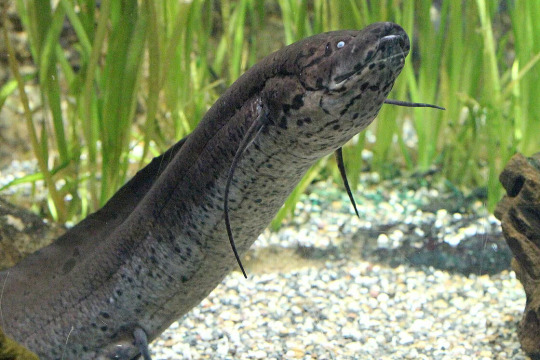
(Photo from Zoo Leipzig)
Conservation Status- Least Concern
Habitat- Western Africa; Southern Africa
Size (Weight/Length)- 3.6 kg; 100 cm
Diet- Mollusks; Frogs; Fish; Roots; Seeds
Cool Facts- The West African lungfish have one of the most complex respiratory systems of any fish. Capable of breathing air with help from gas bladders, they can maximize their gas exchange in their lungs. Even when water is abundant, West African Lungfish breathe directly from the surface. However, living in Africa often means a lack of water for most of winter. These lungfish are capable of living outside of water for these months, buried in dry riverbeds and waiting for the rains to bring rivers. During their aestivation, the West African lungfish doesn’t eat at all. One time, a lungfish survived 3 and a half years without eating anything as it waited for its river to fill.
Rating- 13/10 (Epitome of noodle arms.)
#animal of the day#animals#fish#lungfish#tuesday#august 15#west african lungfish#biology#science#conservation#the more you know
307 notes
·
View notes
Text


This animal was requested!
36 notes
·
View notes
Text


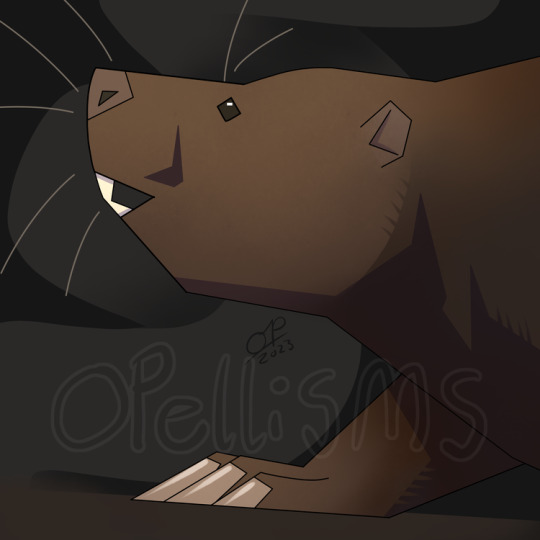

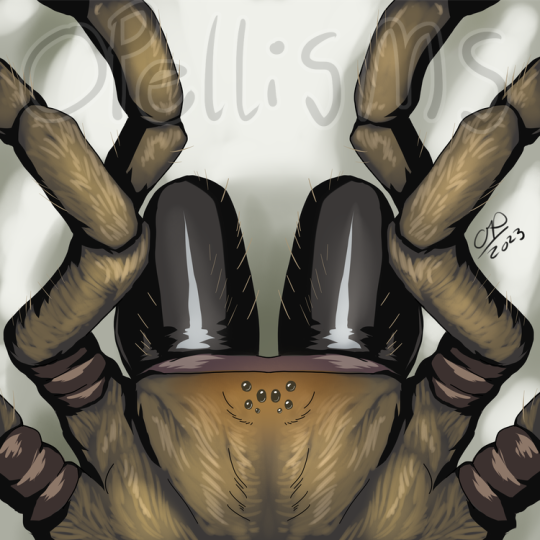

Round 1 and 2 art from the Animal Engineers division! Cathedral termite round 1 White-spotted pufferfish round 1 Palaocastor round 1 & 2 Sydney brown trapdoor spider round 1 Spotted lungfish round 2
#art#my art#2023mmm#March Mammal Madness#cathedral termite#pufferfish#white-spotted pufferfish#Palaeocastor#trapdoor spider#sydney brown trapdoor spider#slender lungfish#african spotted lungfish#not animated#not animation
12 notes
·
View notes
Text
Salmon: nope!


#damn#no salmon#fishposting#I love lungfish#all kinds#australian#african#south american#they are all so cool#but not as cool as salmon (lying)
25K notes
·
View notes
Text
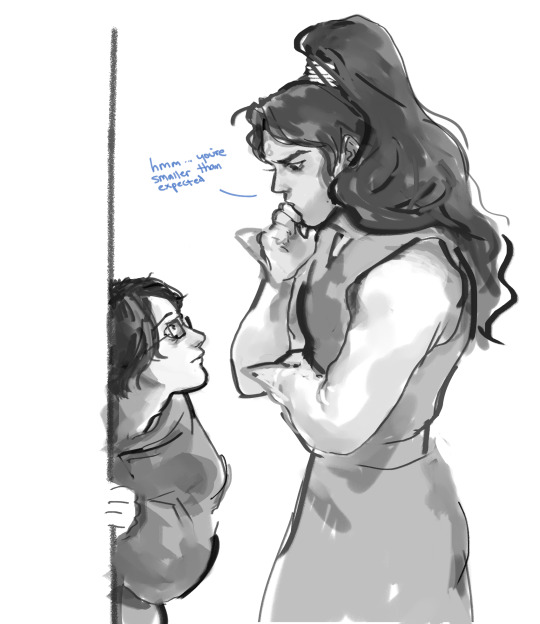
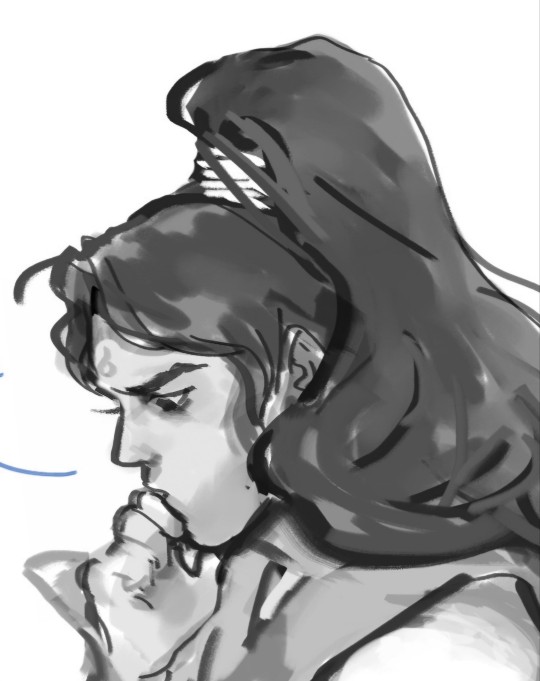
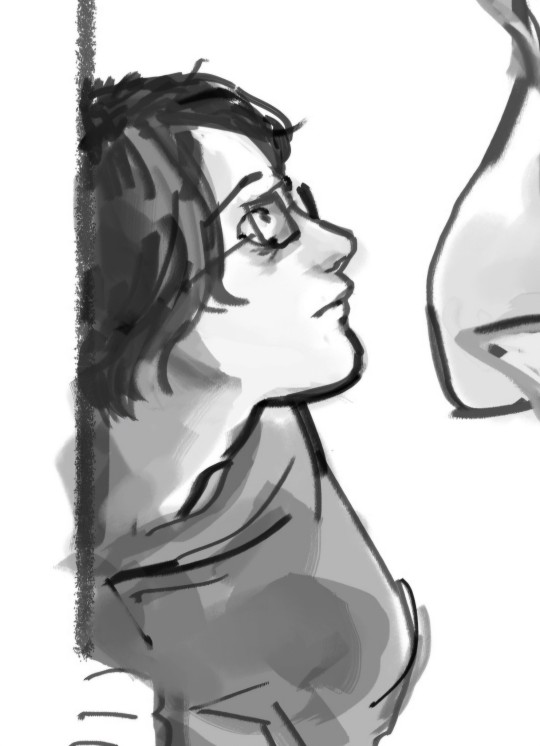
sketch: original!binghe finding original!shen yuan
after reading the bingge/bingmei extras, i imagined original!binghe going to another dimension and finding the original shen yuan. Like, just knocking on the lil dude's door all casual like?
and poor unsuspecting original!shen yuan, who's still deeper in denial than an african lungfish, opens the door and is immediately greeted by bingge's giant luscious man titties and then he has a heart attack and dies
#digital art#littlebreadrolls#artists on tumblr#fanart#littlebreadrollsart#art#mxtx#scum villian self saving system#scum villain#svsss#shen yuan#luo binghe#luo bingge#tagging is so hard what am i supposed to tag? everything?#binggeyuan
2K notes
·
View notes
Text

Expedition Pilgrims
Sha Wujing (435cm): His outfit is mostly inspired by Mongolian clothes since he's found in the Gobi desert stretch of the journey. His bangles are made of fossil bone, and he can use the waist cloth as a headwrap during adverse weather. His markings are inspired by African Lungfish and Mudfish fins, as they are species that exist somewhere between water and dry air. The beasts on his knees are an extension of him, and he can see and speak through them as needed. His beard and long hair can have Ghibli physics depending on his mood and emotions. Zhu Wuneng (~300cm): Inspired by Northern Tibetan clothes, as that's the region the group recruits him. Traditional clothes tend to have way more accessories and golden details so I had to simplify a bit. His features are a mix of wild boars and Indonesian babirusa, with the iconic bristles on his head. I leaned on ceremonial Tibetan swords and necklace beads for the decorations on his rake. His vest can be closed, he just prefers not to most of the time. Sun Wukong (125cm): I've already commented on his design over here, but I'll elaborate that the yellow shirt is the one he gained from Tripitaka soon after he was released, while the pants and red half-robe were the garments he was given by Guan Yin. The hoops on his feet and purple beads were reacquired back in Huaguoshan when he first fled the pilgrimage, heading to his family instead of Ao Guang's palace. (A-ma and Jinju gave them to him so he'll always have something to home to remember them by, as well as where he first started, as the beads were gained during his lessons with Subodhi.) Tripitaka (163cm): This is but one of his many outfits since travel can be rough on clothes, and even more so when you get kidnapped by demons and thrown off your horse all the time. He wears the usual orange monk robes, with some kind of travel clothes over them. He gains some fur boots from Boquin for cold weather but usually prefers sandals most of the time. He seldom uses the cassock and crown he received from Guan Yin, save for when he pays respects to temples and holy sites, but the staff is a constant companion. Ao Lie (167cm, 130cm at the shoulder as horse): Being effectively in exile until the journey is complete, he wears less fancy clothes than he usually would as a prince, but his status still shows. I tried to balance more casual hanfu of the era with some armor parts, like the waist guard and armored boots. He was given the skill to shapeshift into a horse by Guan Yin when she commanded him to wait for the chosen pilgrim monk, so he can shift at will, but preferably when the tack has been taken off. Speaking of, tack is lost and replaced multiple times during the journey, so I didn't depict any specific one.
my Expedition AU designs and heights for the five lads, ive spent so much time on this its not even funny lololol but hey it's done!! i'm free!!
#journey to the west#jttw#xiyouji#jttw au#jttw fanart#expedition to the west au#Sun clan au#bell dragon art#sun wukong#monkey king#sha wujing#zhu bajie#tang sanzang#tang xuanzang#tripitaka#bai longma#ao lie
942 notes
·
View notes
Text
Round 2 - Chordata - Actinistia


(Sources - 1, 2)
The Sarcopterygians (“Lobe-finned Fishes”), are the last of the three groups of “fish”, and are so named for the prominent muscular limb buds (lobes) within their fins. Of the Sarcopterygians living today, they are represented by the coelacanths, lungfish, and tetrapods (including humans), who all diverged in the Silurian. These next fish are closer related to us than they are to Actinopterygiians.
The class Actinistia, the “Coelacanths”, are an ancient group of fish that have been around since the Devonian but today are only represented by two remaining species: The West Indian Ocean Coelacanth (Latimeria chalumnae) and the Indonesian Coelacanth (Latimeria menadoensis).
Coelacanths can live as deep as 700 m (2,300 ft) below the sea, but are more commonly found at depths of 90 to 200 m (300 to 660 ft). They have sensitive eyes which include a tapetum lucidum and many rods which help them see better in dark water, as they are most active at night. They are opportunistic hunters, feeding on cuttlefish, squid, snipe eels, small sharks, and other fish found around their deep reef and volcanic slope habitats. Their abundance of fins allow for high maneuverability, and coelacanths can orient their body in almost any direction in the water. They have been seen doing headstands as well as swimming belly up. They are able to slow their metabolisms at will, sinking into less-inhabited depths and going into a hibernation mode to conserve energy.
Coelacanths are ovoviviparous, with the female retaining the fertilized eggs within her body while the embryos develop over a gestation period of five years. The female will give live birth to around 5-26 young. Young coelacanths resemble the adult, but carry an external yolk sac below their pelvic fins, and have larger eyes relative to body size. Individual coelacanths may live as long as 80 to 100 years.
Coelacanths get their name from Coelacanthus, a genus of Permian coelacanths and the first coelacanths to be described. Over 100 fossil species are known, and all of them were believed to have gone extinct in the Cretaceous. On December 23, 1938, the first Latimeria specimen was discovered among the catch of a South African fisherman, making coelacanths a “lazarus taxon.” While previously considered a “living fossil”, coelacanth body shapes were much more diverse in the Early Triassic, and Latimeria is not known from fossils, showing that it had to have gone through some changes to adapt to the modern day.

Propaganda under the cut:
Since there are only two living species in this class and both are threatened, this is the most endangered class of animals in the world.
Coelacanths get along with other coelacanths, though they recoil from physical touch. Scientists think that they recognize each other via electric communication.
Mawsonia was one of the largest known coelacanths, with one specimen estimated at over 5 m (16 ft) long. It lived from the Late Jurassic to Mid-Cretaceous.
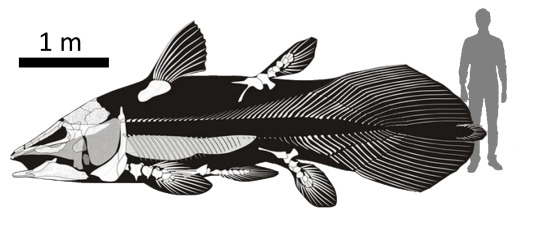
(source)
89 notes
·
View notes
Text


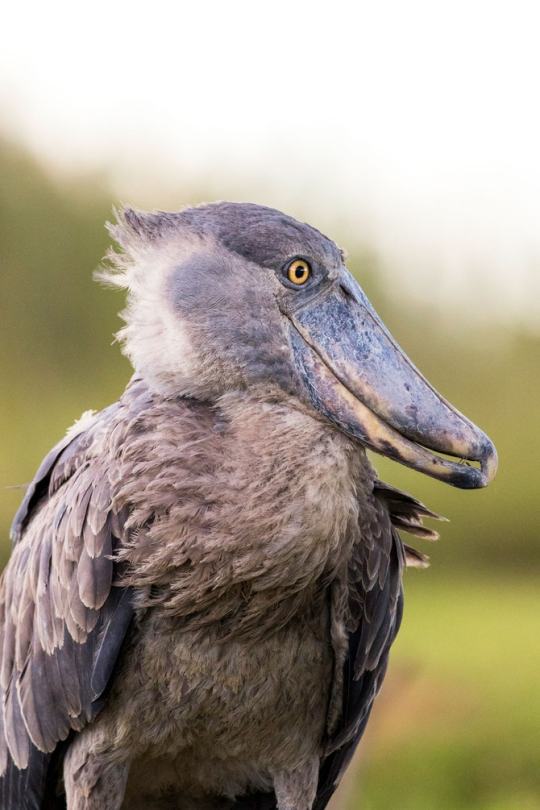
A Shoo-in Shoebill Stork
The shoebill stork, also known as the whalebill stork or Balaeniceps rex is in fact not a stork at all, but a long-legged wading bird belonging to the family Pelecaniformes. This species can be found in the central African tropics, from southern Sudan to northern Tanzania. Within this range, they mainly inhabit freshwater swamps and dense marshes, particularly those with deep water large reed beds.
Balaeniceps rex is often referred to as a dinosaur among birds due to its fearsome appearance. The average individual stands 1.1-1.4 m (3.6-4.5 ft) tall and has a wingspan of 2.3 to 2.6 m (7.5 to 8.5 in). However, adults are quite light, weighing only 4 to 7 kg (8.8 to 15.4 lb). Males tend to be larger than females, but otherwise the two sexes look identical. Adults have dark grey plumage with a lighter belly and darker wings. Their most striking feature is their beak, which is extremely large and can be said to resemble a wooden show (hence the name).
The shoebill's beak is very useful for catching its primary prey: fish. B. rex consumes a variety of species, including lungfish, catfish, and tilapia, as well as non-fish items like water snakes, frogs, turtles, mollusks, and even young crocodiles. Shoebills typically stalk their prey, or stand perfectly still and wait for their prey to come to them, before quickly snatching it up and decapitating it with the sharp edges of their beaks. Because of their large size and strong bills, adults are seldom prey for other animals, and they defend their nests fiercely from predators like snakes and other birds.
Outside of the breeding season-- and even during it-- shoebills are extremely territorial. Not only do they chase potential predators away from their nests, both males and females will fiercely defend their territory from other shoebills.
Breeding begins in the dry season, typically in in May, and lasts until about October. Once a male and female form a pair, they remain together for the duration of the mating season. They build a nest from floating vegetation, and 1-3 eggs are cared for by both parents; in addition to being incubated for warmth, one parent may also occasionally pour a beak-full of water over the eggs to keep them cool during the hot summer day. The eggs hatch about 30 days after being laid, and young are fed continuously-- though usually only one chick survives to adulthood. At 125 days old they become fully independent and leave to establish their own territories. The average individual can live up to 35 years in the wild.
Conservation status: The IUCN lists the whalebill stork as Vulnerable. Current wild population estimates sit at about 5,000-8,000 individuals. Primary threats include poaching for the zoo trade and consumption, habitat destruction, and pollution.
If you like what I do, consider leaving a tip or buying me a kofi!
Photos
Santiago Caballero Carrera
George Amato
Mana Meadows
#shoebill stork#Pelecaniformes#Balaenicipitidae#wading birds#birds#wetlands#wetland birds#freshwater fauna#freshwater birds#africa#central africa#animal facts#biology#zoology#ecology
167 notes
·
View notes
Text
Fish of the Day
Happy Thursday, everyone! Today's fish of the day is the Australian lungfish!
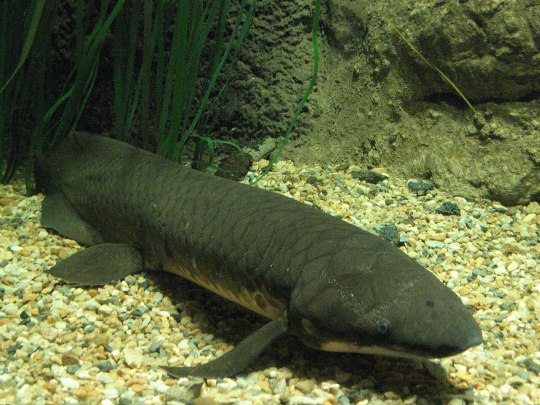
The Australian lungfish, or barramunda, known by scientific name Neoceratodus forsteri is one of the 6 surviving lungfishes of the modern world. The other 5 lungfishes are scattered to other sections of the world, one in South America, and the other 4 all living in Africa. As the name implies, this lungfish is endemic to Australia living in South Eastern Queensland, or for those who don't know the general areas of Australia, the upper right corner of the country. Living exclusively in slow moving streams, still waters, and various waterside banks living entirely in freshwater systems. This fish is primarily nocturnal, and almost entirely carnivorous. Its diet consists of: frogs, larvae, bugs, plant material, earthworms, fishes, small invertebrates, and anything else it can catch. They are primarily bottom dwellers, and prey is caught directly in the mouth and then crushed multiple times, being positioned correctly by a bone called a hydroid apparatus. Australian lungfish have the most primitive of surviving lungfish feeding behaviors.

Australian lungfish are best known for their ability to survive dry seasons. However, unlike African lungfish, which can survive fully in droughts by submerging themselves into This is done by submerging the body in the mud, and rising to the surface to swallow oxygen into a single dorsal lung. This lung is only supplementary, and the fish prefer to breathe through their 5 gills. Of the six lungfish, the Australian lungfish is the only one to not have two lungs, but rather a fold down the center of the single lung acting as a wall, which blood capillaries run through, allowing gas exchange. Unlike it's African counterparts, the Australian lungfish can not survive total water depletion, (other lungfish survive this by creating a layer of mucus around itself and living there for several years until water returns). Australian lungfish can survive several days out of the water, but can not do so unless it is in a moist environment, usually mud.
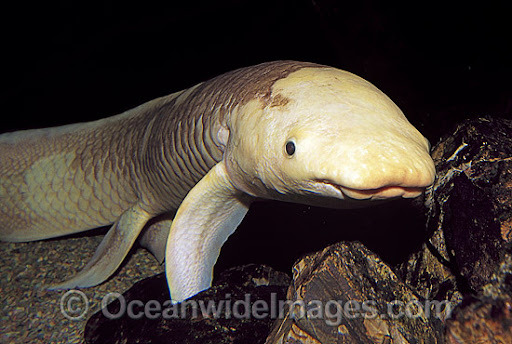
Fossil records of lungfish tell us that some of their first fossils can be found from 410 Million years ago, being the closest living relative to the tetrapod. The last shared ancestor between the lungfish and tetrapod was 420 Million year ago. Originally, these animals started as marine creatures, but sometime in the carboniferous the species became freshwater exclusive, around the same time that the last common ancestor to all remaining lungfish lived. Australian lungfish in particular appear to have split off about 380 million years ago, and have remained virtually unchanged from their ancestors for over 100 million years, giving them the title of living fossils!

Not only have they remained incredibly similar over the years, they have a long lifespan for individuals as well. A captive Australian lungfish named granddad was shown to live to 108 years (+- 6), with the expected lifespan of wild lungfish surviving at least 20-25 years after they reach sexual maturity. In Australian lungfish, similar to other lungfish species in the world, sexual maturity is reached in males after 17 years, and 22 years in females. Australian lungfish have elaborate courting rituals consisting of three distinct phases. The first phase is searching, where the lungfish will breathe loudly, making mating calls with its single lung. The second is called "follow the leader" where males will attempt to entice a female by nudging and rubbing snouts with her, often at the same time as competitors. The last stage is where two lungfish will descend to lay and fertilize eggs, females producing 2 eggs per spawning season. After breeding, the eggs are left to sink in the vegetation, as Australian lungfish do not nest or care for their young. This is unlike all other lungfish species.
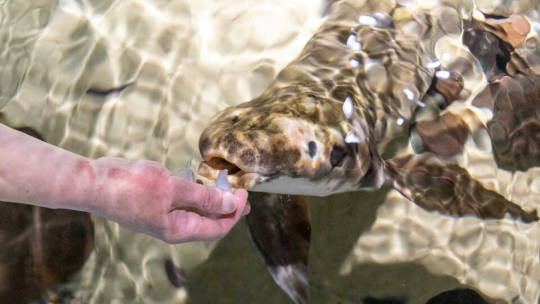
Have a wonderful Thursday, everyone!
#fish#fish of the day#fishblr#freshwater fish#freshwater#australian lungfish#Barramunda#queensland lungfish#lungfish#australia#living fossils
117 notes
·
View notes
Text
Why are lungfish so ignored in the grand scheme…. Don’t you see how beautiful she is…. How marvellous her existence is, in this time, in this life…. How many hardships she has endured and can endure…. Not just the Australian lungfish but the South American lungfish…. African lungfishes… Are they not the peak of lobe-fin evolution?
65 notes
·
View notes
Text
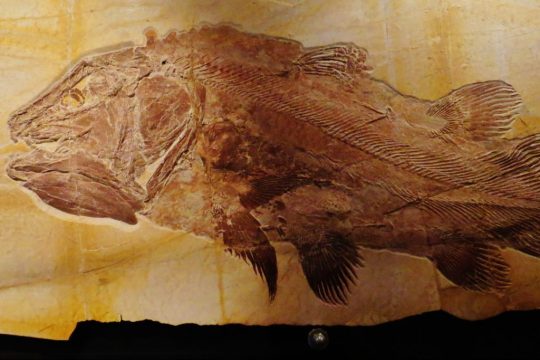
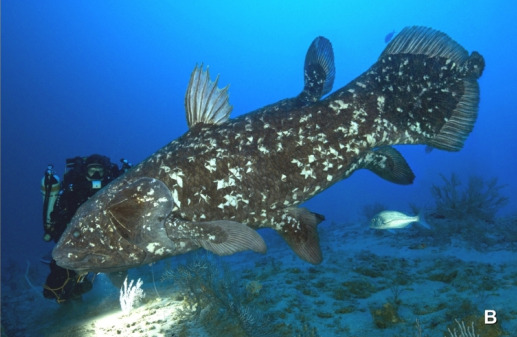
Happy Fossil Friday!
Who: Coelacanthiformes
What: Coelacanths! Large lobe-finned fish from the Class Actinistia, a close relative of the lungfish.
When (group): Devonian - Present (thought to have gone extinct during the End-Cretaceous extinction event, but members of the group were "rediscovered" in 1938)
Where: (Living representatives) along the east African coast and the Comoros Archipelago in the Indian Ocean.
(Fossil representatives) England, Czech Republic, France, Germany, India, Switzerland, Brazil, Democratic Republic of the Congo, China, Uruguay, USA, and more.
Fun Fact!: There are two living speices (that we know of) of Coelacanth: Latimeria chalumnae & Latimeria menadoensis
Here is a link to an article for the story of how this "living-fossil" was rediscovered by the scientific community and the museum curator who's quick thinking and determination helped bring this animal back into the spotlight.
Why are they cool?: Instead of the bony vertebral column shared by other vertebrates the coelacanth retains the ancestral fluid filled notochord which is less rigid than vertebrae, but offers more flexibility.
Image Credits: (Left) Coelacantheformes Fossil From the Natural History Museum of Bamberg & (Right) Laurent Ballesta - Gombessa Expéditions
159 notes
·
View notes